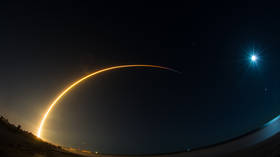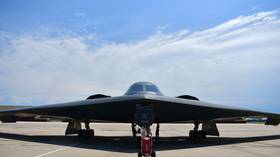Out-of-control SpaceX rocket to smash into Moon, experts warn

An out-of-control SpaceX rocket is on a collision course with the Moon after spending nearly seven years tumbling in a “chaotic” orbit through space, meteorologists have warned. Thought to be the first-ever “unintended lunar impact,” the derelict rocket is expected to crash in early March.
The booster rocket, which was part of the company’s Falcon 9 spacecraft, had been launched from Florida in February 2015. It formed the second stage of SpaceX’s mission to send up the National Oceanic and Atmospheric Administration’s ‘Deep Space Climate Observatory’ satellite.
However, it lost control after completing a long burn of its engines to launch the satellite – and the rocket had neither enough fuel to return to the Earth’s atmosphere, nor the energy to “escape the gravity of the Earth-Moon system,” meteorologist Eric Berger explained in an Ars Technica post.
Space watchers are of the opinion that the rocket – which apparently contains about four metric tons of “space junk” – will smash into the far side of the moon near its equator at a velocity of about 2.58 kilometers per second. The collision could take place as early as March 4, according to Bill Gray, the creator of Project Pluto, which tracks near-Earth objects, asteroids, and comets.
In a recent blog post, Gray noted that the rocket “made a close lunar flyby on January 5” but said the exact location of impact on the Moon was a “little tricky,” due to unpredictable effects such as sunlight “pushing” the object away from the Sun. However, it will likely create a sizeable impact crater that may be studied and imaged by satellites in a lunar orbit.
“We already know what happens when junk hits the Earth; there’s not much to learn from that,” Gray wrote, adding that he was “rooting for a lunar impact.”
The collision will not be observable from Earth since “the bulk of the Moon is in the way” and because the impact is set to take place a “couple of days after New Moon” – the time of the lunar cycle when the Moon is not visible from Earth.













